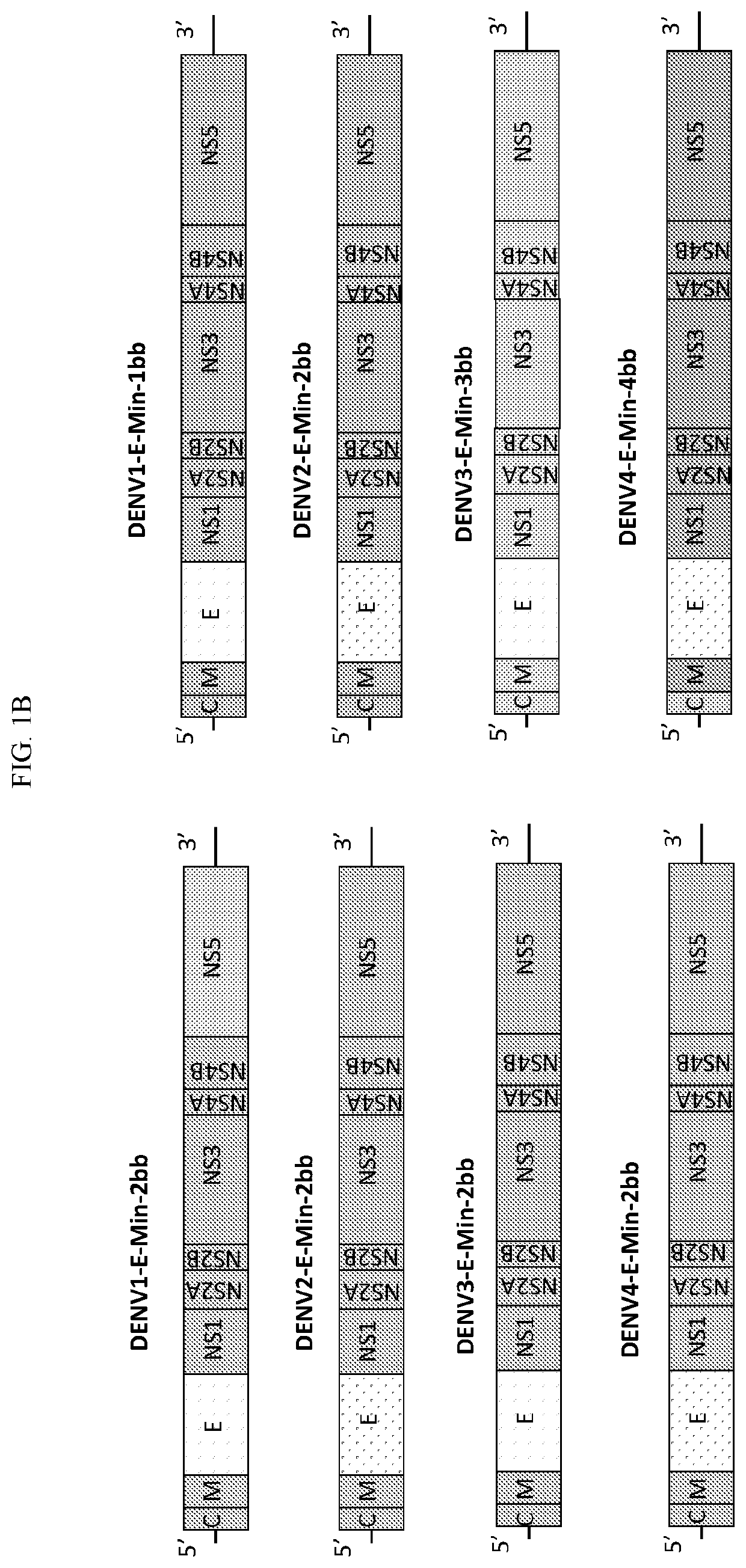Attenuated dengue viruses
- Summary
- Abstract
- Description
- Claims
- Application Information
AI Technical Summary
Benefits of technology
Problems solved by technology
Method used
Image
Examples
example 1
[0193]Rapid design and construction of SAVE-deoptimized, live-attenuated dengue vaccine candidates. To select our target sequences, we started with all prM-E sequences of all DENV virus isolates ofthe last decade and performed an amino acid consensus sequence analysis, available at the NCBI Virus Variation Database. As the consensus sequence usually never exists as an actual virus, it is unwise to use it as the basis of our designs. We prefer natural virus evolution to tell us what works and what does not. Thus, the consensus sequence for each serotype is then searched against the entire Genbank using the tblastn algorithm to identify an actual genome of a replicating virus which is most identical to the consensus sequence; we then used this sequence as our target sequence. In addition, the target sequence must not be unique in the database (possible sequencing artifacts), in which case we select the next highest identity sequence to the consensus, which is represented by two or mor...
example 2
Leveraging SAVE Platformflexibility to Create Second-Generation Dengue Virus Vaccine Candidates
[0194]To fine-tune attenuation and immunogenicity, a second generation of Dengue virus vaccine candidates were constructed using the SAVE platform (FIG. 2). The second generation of dengue vaccine candidates leverages the flexibility of the SAVE platform to reduce the deoptimized region from 2014 bp (E-min) to 997 bp (W-E-Min) or further to 664 bp (W-W-E-Min) while keeping the amino acid sequence 100% identical in a homologous backbone.
example 3
Growth of Heterologous Backbone Dengue Vaccine Candidates in Vero Cells Under Animal-Component-Free Conditions
[0195]To optimize production conditions for future cGMP manufacture and test for attenuation in vitro, DENV1-4 E-Min were used to infect Vero cells under animal-component free conditions at a MOI of 0.01 and supernatant titrated daily in a multiple-step growth curve over the course of 10 days post-infection. DENV2, DENV3, and DENV4 candidates reached titers of 1-2×105 FFU / ml while DENV1 E-Min titer was reduced by ˜1 log10 compared to the others. (FIG. 3).
PUM
 Login to View More
Login to View More Abstract
Description
Claims
Application Information
 Login to View More
Login to View More - R&D
- Intellectual Property
- Life Sciences
- Materials
- Tech Scout
- Unparalleled Data Quality
- Higher Quality Content
- 60% Fewer Hallucinations
Browse by: Latest US Patents, China's latest patents, Technical Efficacy Thesaurus, Application Domain, Technology Topic, Popular Technical Reports.
© 2025 PatSnap. All rights reserved.Legal|Privacy policy|Modern Slavery Act Transparency Statement|Sitemap|About US| Contact US: help@patsnap.com



